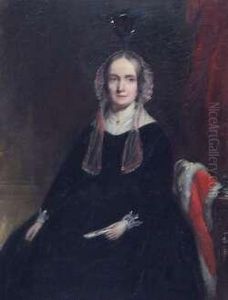William Bonnar Paintings
William Bonnar was a Scottish artist known for his genre and historical paintings, born in 1800 in Edinburgh, Scotland. He was a prominent figure in the Scottish art scene during the 19th century. Bonnar's early life was steeped in an environment that cherished the arts, which fostered his development as a painter. He trained at the Trustees' Academy in Edinburgh, an institution renowned for its contribution to the Scottish art landscape, where he was influenced by the teachings of Sir William Allan. His education there laid a solid foundation for his artistic career, enabling him to explore and refine his style.
Bonnar's work is characterized by its meticulous attention to detail, vibrant use of color, and the ability to capture the essence of Scottish life and history. He was particularly adept at genre painting, capturing scenes of everyday life with a realism and sensitivity that resonated with viewers. His historical paintings also garnered acclaim, often focusing on pivotal moments in Scottish history with a dramatic flair that brought these events to life on the canvas.
Throughout his career, Bonnar exhibited his work widely, including at the Royal Scottish Academy, where he became an associate member in 1826 and a full member in 1830. His paintings were well-received, earning him a reputation as one of Scotland's leading artists of the time. Despite his success, Bonnar's life was marked by periods of financial difficulty, a common plight for artists of the era.
William Bonnar's contribution to Scottish art was significant, not only in terms of his own creations but also in his influence on other artists. He was a mentor to several younger painters, imparting his knowledge and passion for art to the next generation. Bonnar died in 1853, leaving behind a legacy that has continued to influence Scottish painting. His works are preserved in various collections and museums, serving as a testament to his skill and dedication to depicting the spirit of Scotland.





